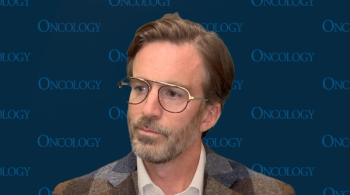
Black, Elderly Patients Less Likely to Receive Treatment for Lung Cancer
About a fifth of patients with lung cancer in the United States receive no treatment at all, while approximately 6 in 10 receive the minimal treatments recommended by the National Comprehensive Cancer Network.
About a fifth of patients with lung cancer in the United States receive no treatment at all, while approximately 6 in 10 receive the minimal treatments recommended by the National Comprehensive Cancer Network. These disparities lie in certain subsets of the population, particularly among the black community and the elderly, according to a new population-level study in the Annals of the American Thoracic Society.
“Between 2010-2014, many lung cancer patients in the United States received no treatment or less intensive treatment than recommended,” concluded the study authors. “Particularly, elderly lung cancer patients and non-Hispanic blacks are less likely to receive guideline-concordant treatment.”
The data came from 441,812 cases in the National Cancer Database over the 5-year period.
The team was led by Erik F. Blom, MD, a researcher in the department of public health at the Erasmus MC University Medical Center in Rotterdam in the Netherlands, who had a guest affiliation for the project with the University of Michigan, where one of the other authors worked.
The data was assessed using multiple multivariable logistic regression models. The models looked at treatments among racial groups, and age classifications-and tested whether adjusting for patient, tumor type, and healthcare provider variables meant disparities still persisted.
The disparities did, according to the authors. A total of 62.1% of patients in the US received treatment that fulfilled guidelines, but 21.6% did not.
Further, 16.3% received less intensive treatment than the recommendations called for, the data showed.
Patients over 80 years old were much less likely to receive treatment to the relevant guidelines (OR, 0.12; 95% CI, 0.12-0.13) compared with their diagnosed counterparts who were younger than 50 years of age. Moreover, black patients had significantly less treatment odds than white patients (OR, 0.78; 95% CI, 0.76-0.80).
The disparities were seen in all the clinical subgroups-but it wasn’t statistically significant for extensive small-cell lung cancer, according to the study.
The most common less intensive treatment was conventionally fractionated radiotherapy only (range, 2.5%-16.0%), and chemotherapy only for the non-metastatic subgroup (range, 1.2%-13.7%). Another less-intensive subgroup was conventionally fractionated radiotherapy and chemotherapy for localized non-small cell lung cancer (5.9%).
Reasons for such disparities are not clear at the moment, said study co-author Douglas Arenberg, MD, a pulmonologist at the University of Michigan. “While these findings are very concerning, it has always been easier to identify disparities in care than it has been to understand why they persist,” he said. “There may be good reasons why less intensive treatment is in fact medically appropriate. The National Cancer Database does not include that level of detail.”
The overall takeaway: there is room for improvement, concluded the authors.
“Patterns of care among those receiving less intensive treatment than recommended suggest room for improved uptake of treatments such as stereotactic body radiation therapy among localized non-small cell lung cancer,” they wrote.
REFERENCES
Blom E, ten Haaf K, Arenberg D, de Koning H. Disparities in Receiving Guideline-Concordant Treatment for Lung Cancer in the United States. Ann Am Thorac Soc
Newsletter
Stay up to date on recent advances in the multidisciplinary approach to cancer.
















































































